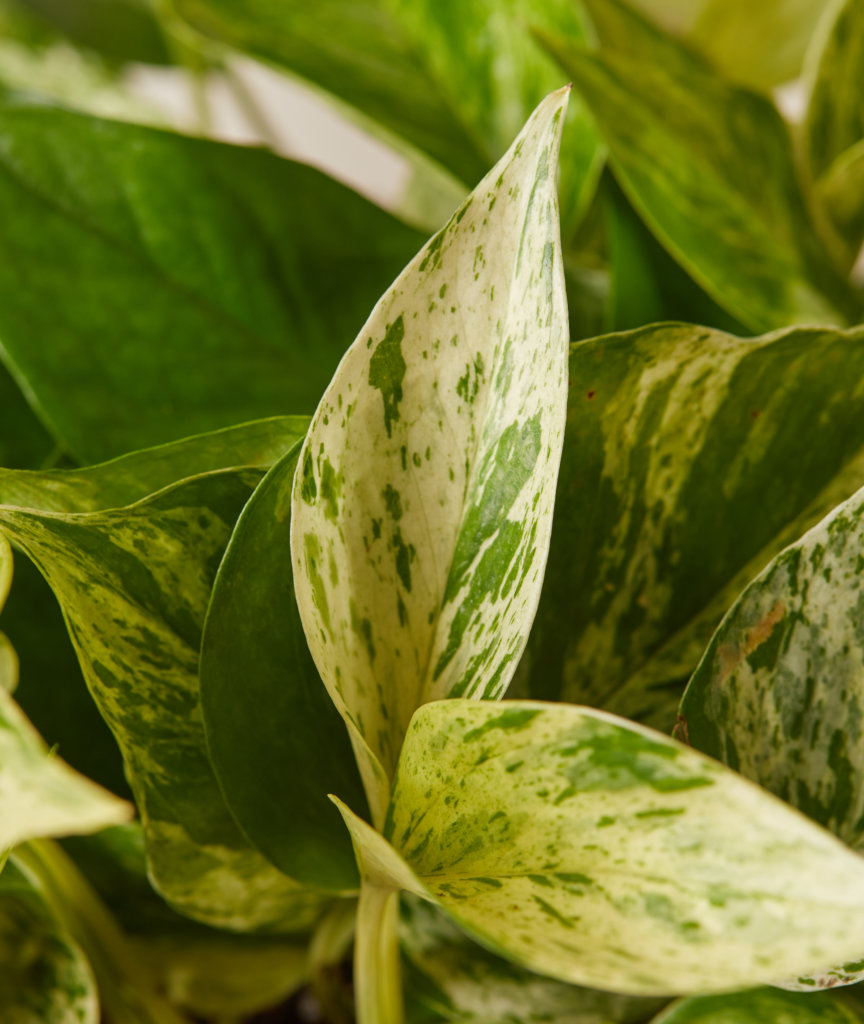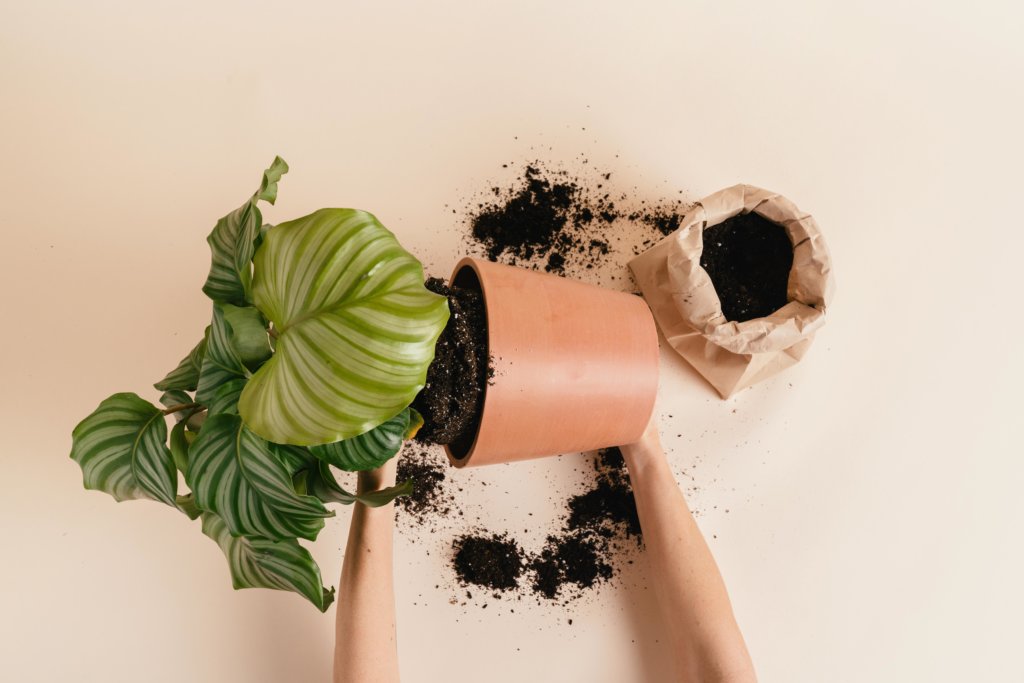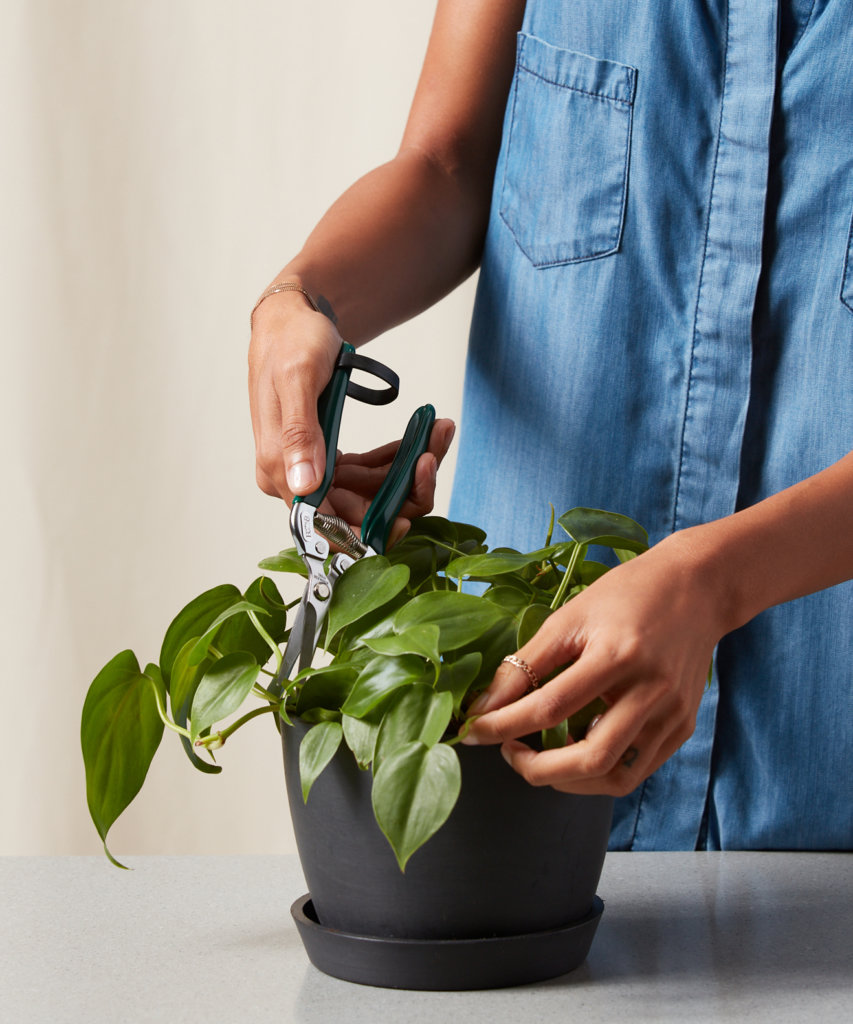After the general hustle and bustle of the holidays, the shift to a new year encourages us to simplify and start over with a renewed focus on our goals. Much like plants, our goals often include an element of growth. But, for people and plants, strong growth only happens when the conditions are right. There are many lessons to be learned from our leafy companions, so let’s dive right in!
Embrace dormancy

Thanks to shorter days, less intense sunlight, and cooler temperatures, many houseplants naturally slow their growth over the winter months, and some even shed their leaves completely. This process is completely natural, mimicking what these plants experience in their native habitats. Whether it’s a drought season or a dip in temperature, natural weather patterns can signal to plants around the world that it’s time to conserve resources and wait it out for brighter, warmer days.
If your plant slows down for the winter, don’t worry — and more importantly, don’t fight it! Like us, plants can benefit from a little time to rest and recharge in order to emerge stronger than ever in the spring.
Here are a few tips to care for your plants if they are going through a dormant period:
- Reduce the frequency of watering, since a slow-growing plant will use far less water.
- Avoid direct sunlight, which can cause leaves to become scorched.
- Clean up any shriveled, fallen leaves that can attract pests.
- Don’t fertilize — since the plant isn’t actively growing, fertilizer could do more harm than good.
- Avoid re-potting, since the plant won’t be able to “grow out” of any stress the repotting process brings and will be more susceptible to root rot.
The Grow-How® Team has a more in-depth guide to winter plant care here.
Nurture new growth

Though you might not expect it, lots of houseplants can still experience growth spurts over the frigid winter months. This can be attributed to warm indoor temperatures from cranking up the furnace, which many of our tropical houseplants love. Light levels can be another factor — though the days are shorter, the winter sun rises at a lower angle and trees have lost their leaves, meaning more sunlight can stream in through our windows.
If you notice a new leaf or two unfurling, don’t be surprised! What better time to observe new growth than when we are stuck inside?
Here are some tips to keep your growing plant thriving:
- Don’t forget to water! Growing plants need consistent watering to encourage healthy development.
- Fertilize regularly with a houseplant fertilizer diluted to half-strength. Monthly is usually fine, but you can find recommendations for your specific plant here.
- Keep your plant clean of dust and debris with microfiber dusting gloves.
- Appreciate the daily changes — watching a leaf unfurl can be inspiring. Create a daily ritual of checking on new growth!
If you need help spotting new growth, the Grow-How® Team has a great resource here.
Upsize the pot

If your plants are rewarding you with lots of new growth, a restorative repotting session may be in order. Upsizing plants into larger pots is a great way to spend some winter downtime and encourage new growth. As a bonus, it will be easier to keep a close eye on your newly repotted plants during the adjustment period that follows. We recommend repotting during periods of active growth and only slightly increasing the diameter of the pot. While repotting can be done successfully at any time, following these guidelines reduces the risk of root rot.
Truth be told, most plants won’t need to be repotted every year. But if you’d like to encourage growth or switch to a new pot, here are some tips to follow:
- Look for signs your plant would appreciate an upsized pot, like roots circling the inside of the pot, a plant that hasn’t been repotted in years, soil that isn’t able to absorb much water, or a plant that needs water very frequently.
- Choose a pot that’s only 1-2” wider than the current pot and that has a drainage hole.
- Be as gentle as possible in transferring your plant to its new pot. Backfill with potting soil, water it in well, let the excess water drain, and place it in a bright, warm area.
- Check on your plant daily over the next couple of weeks as it adjusts to its new environment, and take care not to overwater.
For more repotting tips, check out The Grow-How® Team’s repotting blog.
Trim and transform

All types of houseplants benefit from an occasional spa day, including wiping down the leaves, removing dead or yellowed leaves, and cleaning the outside of the pot. If your plant has gotten a little out of control, you can remove up to 25% of the green growth with clean, sharp snips. And while you’re at it, this is the perfect chance to check for any pest or disease issues that may be ailing your plants. This calming one-on-one time is also a great way for plant parents to de-stress.
For branching plants like jade, rubber tree, and fiddle leaf fig, winter is the perfect time to do a little pruning, whether your plant is dormant or not. Pruning has many benefits, from reviving vigor to encouraging branching and creating aesthetically pleasing, balanced forms.
Here are a few tips on pruning your branching plants:
- Choose a pair of clean, sharp pruners that can easily cut through in one smooth motion.
- Cut about ½” above an existing leaf or node. Wherever you make a cut, a new bud will emerge, eventually creating a new branch. On plants with leaves directly opposite each other, two new buds will emerge, eventually creating two new branches.
- Avoid removing more than 25% of the plant’s leaves and stems at once. Any more can be stressful for the plant. If you need to remove more, it’s best to let the plant adjust for a month or so between pruning sessions.
- Consider wearing gloves and protecting your work area since some plants release sap when cut.
Check out the Grow-How® Team’s step-by-step guide to trimming your plants here.
Get Growing this New Year

As you grow into the new year, embrace the individualized winter care each plant craves. Make a resolution to merge plant care with self care through mindfulness and appreciation of the natural world.
If you want to learn more throughout the year, check out our Plant Care Guides and our Plant Care Blogs. Remember that any plant purchased from Bloomscape comes with free one-on-one expert advice from our Grow-How® Team.



